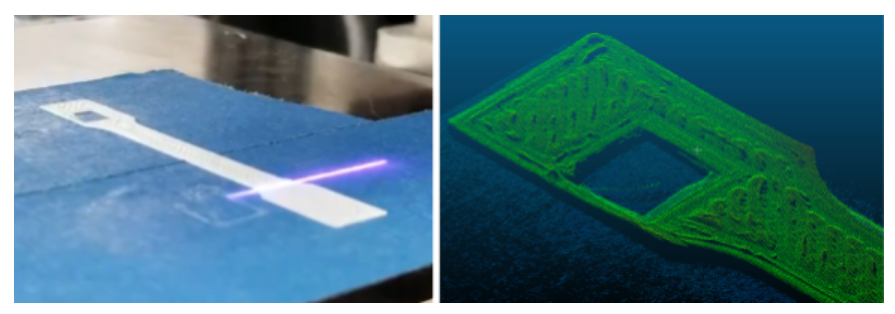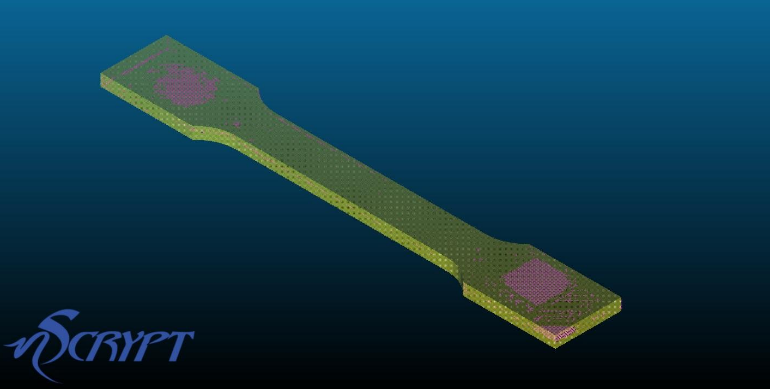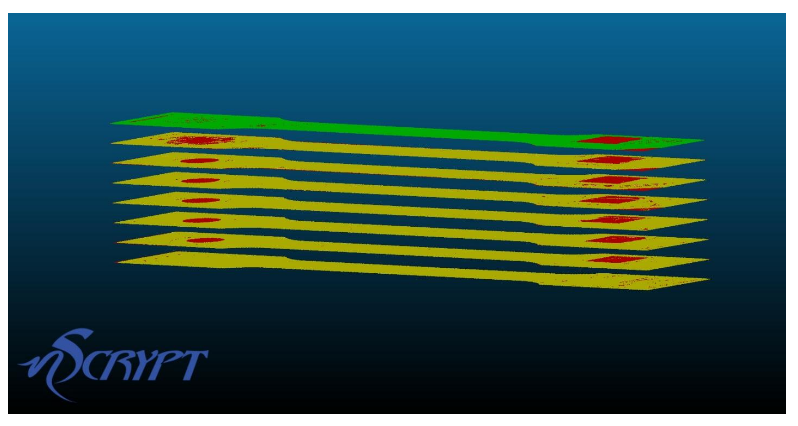 nScrypt, headquartered in Orlando, Florida, wants to see 3D printing operations running at their full potential. In high-performance industrial atmospheres, that means heavy monitoring to ensure any errors or ongoing system problems are dealt with quickly. To promote precise additive manufacturing processes—mainly with their 3Dn systems—nScrypt has created a new inspection system that occurs while the print is in progress.
nScrypt, headquartered in Orlando, Florida, wants to see 3D printing operations running at their full potential. In high-performance industrial atmospheres, that means heavy monitoring to ensure any errors or ongoing system problems are dealt with quickly. To promote precise additive manufacturing processes—mainly with their 3Dn systems—nScrypt has created a new inspection system that occurs while the print is in progress.
This in situ process includes the following features:
- High resolution laser profile scanning to inspect up to 640,000 data points per second.
- Sorting for each set of data points collected for each layer during the 3D printing process.
- Automatic geometric data transmission which informs users of print volume, any missing volume (and its location), and data regarding each layer.
- Scanning resolution of 10µm in the XY axis and 5µm in the Z axis.
“The generated data is in perfect alignment with the part by synchronizing nScrypt’s high-precision linear motion gantry system with the laser readings,” reports the company in their recent press release sent to 3DPrint.com. “This in-situ process only adds 3% – 12% to the total print time, depending on the part’s geometry.”
Industrial users should find performance and efficiency transformed with inspection reports available for every part fabricated.
“The inspection system was developed with our machine’s position feedback and real time kernel to accurately align the data. Once the aligned data is received, we can process it to warn the user of any defects that occurred before moving on to the next part of the print,” says nScrypt Software Engineer, Connor Roggero.
Many businesses should find savings on the bottom line as defects are found before the entire product is manufactured, meaning that wear and tear on machines is reduced and even more importantly—so much material is saved with the elimination of defective prints that go through the entire process only for the user to find problems, and parts that cannot be used. The nScrypt team realizes this will give 3D printing users more confidence in their work.
This monitoring system also eliminates the need for other types of evaluation such as X-rays or ultrasonic testing.
“Inspection reports are commonplace in industries that require meeting strict quality standards, such as aerospace and automotive,” said Paul I. Deffenbaugh, nScrypt R&D Manager. “Traceability is frequently necessary and ensures that root causes of failures can be determined. This in-process inspection system fulfills all of these goals and produces results more detailed than any other system available.”
The program is still being refined further to offer actual in situ repairs, taking even more responsibility off the user. As the inspection process evolves further, the repair should be noted, fixed, and then printing would resume.
3D printing users are a very ambitious lot by nature—discontented with being given limits at any turn regarding materials, software, and hardware—and they are also continually building new layers of improvement into the technological process creating different methods for quality assurance for medical models, in situ inspections, and researching causes of 3D printing flaws. What do you think of this news? Let us know your thoughts! Join the discussion of this and other 3D printing topics at 3DPrintBoard.com.
Subscribe to Our Email Newsletter
Stay up-to-date on all the latest news from the 3D printing industry and receive information and offers from third party vendors.
You May Also Like
3D Printing Unpeeled: New Arkema Material for HP, Saddle and Macro MEMS
A new Arkema material for MJF is said to reduce costs per part by up to 25% and have an 85% reusability ratio. HP 3D HR PA 12 S has been...
3D Printing News Briefs, January 20, 2024: FDM, LPBF, Underwater 3D Printer, Racing, & More
We’re starting off with a process certification in today’s 3D Printing News Briefs, and then moving on to research about solute trapping, laser powder bed fusion, and then moving on...
3D Printing Webinar and Event Roundup: December 3, 2023
We’ve got plenty of events and webinars coming up for you this week! Quickparts is having a Manufacturing Roadshow, America Makes is holding a Member Town Hall, Stratafest makes two...
Formnext 2023 Day Three: Slam Dunk
I’m high—high on trade show. I’ve met numerous new faces and reconnected with old friends, creating an absolutely wonderful atmosphere. The excitement is palpable over several emerging developments. The high...



































